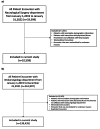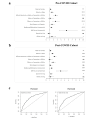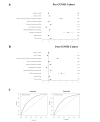Evaluating the Impact of the COVID-19 Pandemic on Late-Canceled and No-Show Appointments at the Department of Neurological Surgery
- PMID: 38868276
- PMCID: PMC11166543
- DOI: 10.7759/cureus.60159
Evaluating the Impact of the COVID-19 Pandemic on Late-Canceled and No-Show Appointments at the Department of Neurological Surgery
Abstract
The coronavirus disease 2019 (COVID-19) pandemic resulted in unprecedented restrictions on the general public and disturbances to the routines of hospitals worldwide. These restrictions are now being relaxed as the number of vaccinated individuals increases and as the rates of incidence and prevalence decrease; however, they left a lasting impact on healthcare systems that is still being felt today. This retrospective study evaluated the total number of canceled or missed outpatient clinic appointments in a Neurological Surgery department before and after peak COVID-19 restrictions and attempted to assess the impact of these disruptions on neurosurgical clinical attendance. We also attempted to compare our data with the data from another surgical subspecialty department. We evaluated 32,558 scheduled appointments at the Loyola University Medical Center Department of Neurological Surgery, as well as 139,435 scheduled appointments with the Department of Otolaryngology. Appointments before April 2020 were defined as pre-COVID, while appointments during or after April 2020 were defined as post-COVID. Here, we compare no-show and non-attendance rates (no-shows plus late-canceled appointments) within the respective time range. Overall, we observed that before COVID-19 restrictions were put into place, there was an 8.9% no-show rate and a 17.4% non-attendance rate for the Department of Neurological Surgery. After COVID restrictions were implemented, these increased to 10.9% and 18.3%, respectively. Greater no-show and cancellation rates (9.8% in the post-COVID era vs 8.0% in the pre-COVID era) were associated with varying socioeconomic and racial demographics. African-American patients (2.56 times higher), new-visit patients (1.67 times higher), and those with Medicaid/Medicare insurance policies (1.48 times higher) were at the highest risk of no-show in the post-COVID era compared to the pre-COVID era.
Keywords: cancellation; covid-19; follow-up appointment; general neurosurgery; no-show.
Copyright © 2024, Choe et al.
Conflict of interest statement
The authors have declared that no competing interests exist.
Figures




Similar articles
-
The Impact of COVID-19 and Socioeconomic Determinants on Appointment Non-Attendance in an Urban Otolaryngology Clinic: A Retrospective Analysis From a Safety Net Hospital.Ann Otol Rhinol Laryngol. 2025 Feb;134(2):117-124. doi: 10.1177/00034894241295475. Epub 2024 Nov 5. Ann Otol Rhinol Laryngol. 2025. PMID: 39501500
-
Understanding Non-Attendance in Pediatric Otolaryngology: A Retrospective Study of Demographics, Socioeconomics, and Pandemic Effects.Ann Otol Rhinol Laryngol. 2025 Jun 14:34894251347100. doi: 10.1177/00034894251347100. Online ahead of print. Ann Otol Rhinol Laryngol. 2025. PMID: 40516103
-
Positive impact of the pandemic: the effect of post-COVID-19 virtual visit implementation on departmental efficiency and patient satisfaction in a quaternary care center.Neurosurg Focus. 2022 Jun;52(6):E10. doi: 10.3171/2022.3.FOCUS2243. Neurosurg Focus. 2022. PMID: 35921181
-
Factors and Reasons Associated With Appointment Non-attendance in Hospitals: A Narrative Review.Cureus. 2024 Apr 19;16(4):e58594. doi: 10.7759/cureus.58594. eCollection 2024 Apr. Cureus. 2024. PMID: 38765331 Free PMC article. Review.
-
Short-notice cancellations of laparoscopic permanent contraception.Contraception. 2022 Oct;114:49-53. doi: 10.1016/j.contraception.2022.04.013. Epub 2022 May 8. Contraception. 2022. PMID: 35545130 Review.
References
-
- An evaluation of neurosurgical practices during the coronavirus disease 2019 pandemic. Pelargos PE, Chakraborty AR, Adogwa O, et al. https://doi.org/10.1016/j.wneu.2020.10.025 World Neurosurg. 2021;146:0–9. - PMC - PubMed
-
- Sheltered neurosurgery during COVID-19: the Emory experience. Saad H, Alawieh A, Oyesiku N, Barrow DL, Olson J. https://doi.org/10.1016/j.wneu.2020.08.082 World Neurosurg. 2020;144:0–9. - PMC - PubMed
-
- Letter to the editor: impact of COVID-19 on neurosurgery and review of the literature. Raju SS, Niranjan A, Germanwala AV, Lunsford LD. https://doi.org/10.1016/j.wneu.2021.02.088. World Neurosurg. 2021;149:300–301. - PMC - PubMed
LinkOut - more resources
Full Text Sources
Miscellaneous
